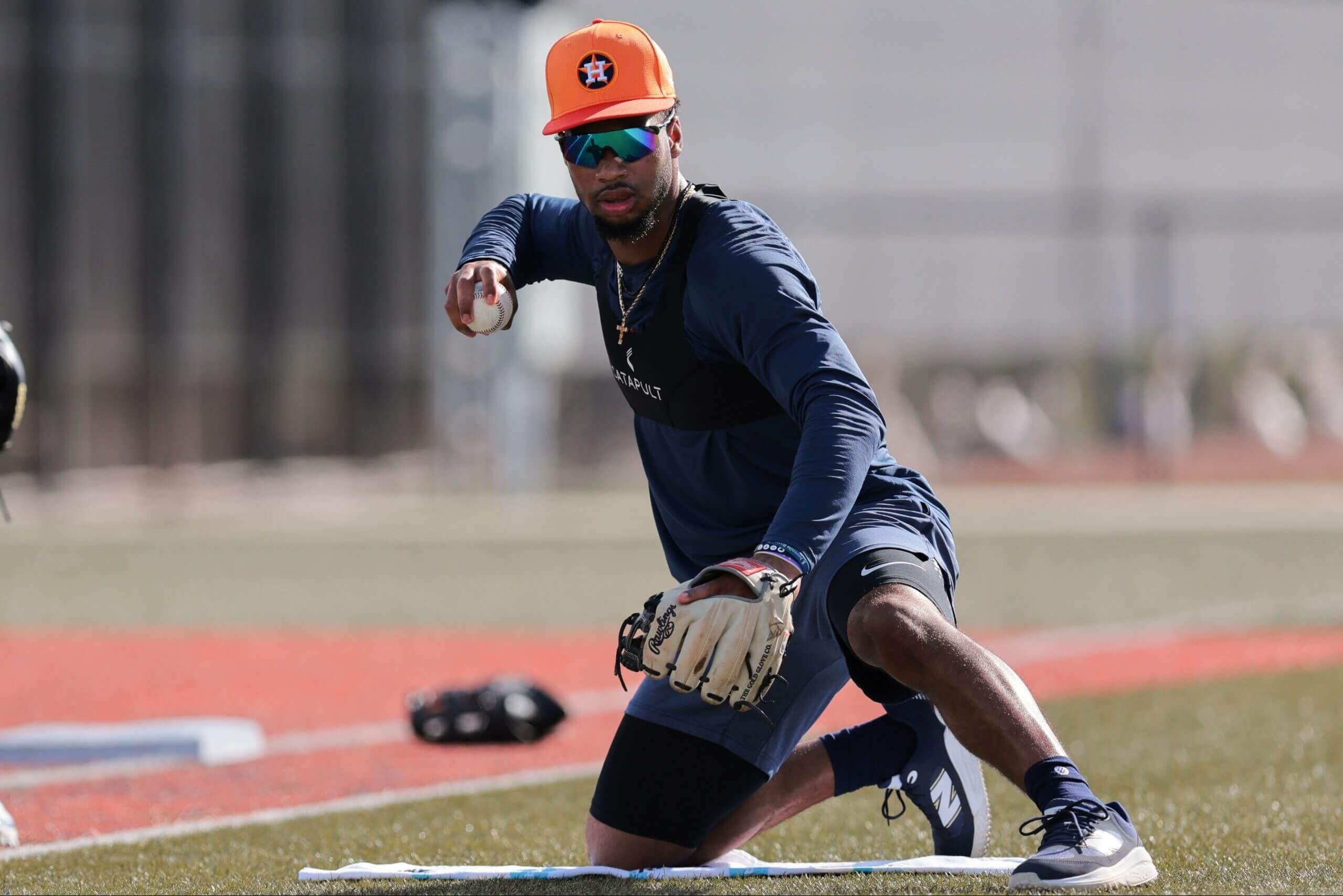
MILWAUKEE — Moving Jose Altuve to left field meant a new reality for the Houston Astros. Second base in Houston hasn’t been in question since Altuve started there on July 20, 2011, as a pint-sized prospect on the precipice of prominence.
Age came for Altuve. So did the sport’s restrictions on shifting, eliminating Houston’s ability to hide his deteriorating range. His selfless acceptance of a position change this winter delivered a dilemma for the first time in more than a decade.
Advertisement
Thirty-five games in, the Astros do not appear close to a permanent solution. The failed offseason pursuit of free-agent Jorge Polanco precipitated a time-share between Brendan Rodgers and Mauricio Dubón that has produced pedestrian results, prompting wonder if an approaching deadline could lead to a shakeup.
Before he made Houston’s roster, Rodgers signed an advanced consent clause, which allows the Astros to either option him to the minor leagues or terminate his contract within 45 days of Opening Day. Saturday is the 45th day of the season, so a decision on his future is imminent, perhaps as early as Friday. That Rodgers launched a three-run home run on Tuesday night against the Milwaukee Brewers could’ve only strengthened his case to stick on Houston’s roster.
Rodgers with his first Astros HR!#BuiltForThis pic.twitter.com/hvR07Tbxbt
— Houston Astros (@astros) May 7, 2025
The home run only raised Rodgers’ OPS to .636. He is striking out 32.9 percent of the time — including twice in Tuesday night’s 4-3 loss — to go along with a .328 slugging percentage across 77 plate appearances. None of that distinguishes him as a difference maker, but peripheral numbers paint a favorable picture for a player the Astros thought could benefit from some offensive adjustments.
Since spring training, Houston’s hitting coaches encouraged Rodgers to widen his batting stance and lower his hands in hopes he could curtail a career 52.8 percent ground-ball rate. Rodgers entered Tuesday’s game with just a 36.6 percent ground-ball rate. The average launch angle of 10.9 degrees on the contact he makes is more than five degrees higher than his career mark.
Rodgers’ 90.6 mph average exit velocity is 1.4 mph harder than his career average, too. The Astros have managed to increase Rodgers’ average bat speed from 71.7 mph last season to 74.3 mph across the first 113 swings he’s taken of this one.
Advertisement
“Getting into stronger positions to rotate better. Rotate faster. Rotate cleaner. Take the hands out of it a little bit, that’s been the goal,” hitting coach Troy Snitker said. “Just to be more connected. He’s super athletic, super twitchy. Let the bigger muscles work at the beginning, get the bat a little more connected and faster.”
Rodgers spent most of Tuesday afternoon alongside Snitker, tinkering with a stance he’s still learning to use.
“It feels like I was almost too wide in my base to where, when I’m going to swing, I’m almost falling over the plate and clipping that outer-third pitch,” said Rodgers, whose opposite-field home run came on a four-seam fastball that nicked the outer quadrant of his strike zone.
“I want to still be in my legs, but just be a little taller to where I have almost a better visual of the pitch and still being able to land soft and put a good swing on it.”
Rodgers started on Tuesday against the Milwaukee Brewers for the 19th time in Houston’s first 35 games, making him the closest thing Houston has to a primary second baseman. Dubón has started 11 times. Altuve returned to second base for the other five games.
According to FanGraphs, Houston entered Tuesday’s game extracting 0.5 wins above replacement from its second basemen. Fourteen clubs had generated more. Only five teams, however, had a lower OPS than the .575 clip posted by Astros second basemen.
The statistic should surprise no one — Rodgers has a career 90 OPS+ while Dubón’s is 86 — but accentuates an often forgotten fact: Houston isn’t deploying them to hit. Their playing time aligns with the Astros’ offseason focus of strengthening an infield defense that declined last season. According to FanGraphs, the Astros are worth one defensive run saved at second base. They ended last season worth minus-11 at the position. Only two teams were worse.
Advertisement
The team views Dubón as its best defensive second baseman, but believes Rodgers offers a higher offensive upside. Given Houston’s struggles scoring runs, then, it is unsurprising that Rodgers has received such substantial playing time.
The Astros did not expect Rodgers to be an offensive stalwart, but woeful production from the middle of their order is magnifying malaise elsewhere. That 17 of Rodgers’ 25 strikeouts this season have come with runners on base only heightens the frustration. Peripherals remain secondary to production, especially for a player in Rodgers’ predicament.
“That’s something I need to get better at. It’s like every time a runner is on base, I fly out, line out or strike out,” Rodgers said before the game. “Just have to keep that same mindset when there are runners on base, not try to do too much and not put more pressure on myself. Just try to play like no one is on base. That’s something I’m trying to focus on more.”
Whether the uncertainty of his future is weighing on Rodgers is a mystery, but it is only human nature to suppose so. Releasing Rodgers would prompt a pertinent question that permeates this entire franchise: Is there anyone in the organization worth replacing him on the roster?
Dubón, he of a .524 OPS, would presumably become the everyday second baseman in Rodgers’ absence. Veteran infielder Luis Guillorme has a .652 mark at Triple-A Sugar Land, but is at least a left-handed bat that would lend some balance to a roster with none of it.

Brice Matthews, shown in spring training, is a top prospect and could be a future second base option for the Astros. (Sam Navarro / Imagn Images)
Brice Matthews, now the top position player prospect in this fallow farm system, has played better at Triple-A across the past two weeks, but is nowhere near forcing the organization’s hand for a major-league call-up.
That Matthews isn’t ready may be to Rodgers’ benefit. The Astros’ actions in spring training made it clear that Matthews is their internal answer at second base. A career .196/.337/.291 Triple-A slash line invites wonder if he’ll ever realize that reality. It stands to reason that a more standout showing from Matthews this season would’ve made Rodgers more expendable.
Advertisement
Whether to keep Rodgers may be a fiscal decision for a club cautious about its proximity to the luxury tax, though shipping some of reliever Rafael Montero’s bloated contract to the Atlanta Braves may have lessened the urgency to lower payroll.
Both Cot’s Contracts and Spotrac approximate that the Astros are at least $4.9 million under the first luxury tax threshold. If those are accurate, removing the remainder of Rodgers’ salary wouldn’t make a substantial dent. Whether owner Jim Crane agrees is a mystery.
What isn’t: His ballclub could benefit from any semblance of offensive invigoration.
“Everything is up,” Snitker said of Rodgers’ underlying metrics. “I think if we play this out over the course of the season, I think it looks improved.”
The Astros have four days to decide if they will.
(Top photo: John Fisher / Getty Images)
This news was originally published on this post .




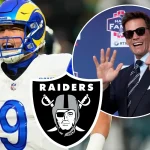
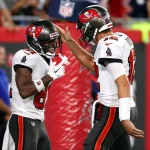
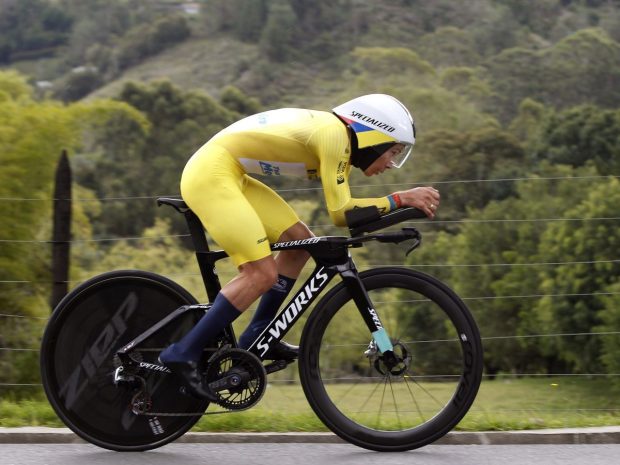

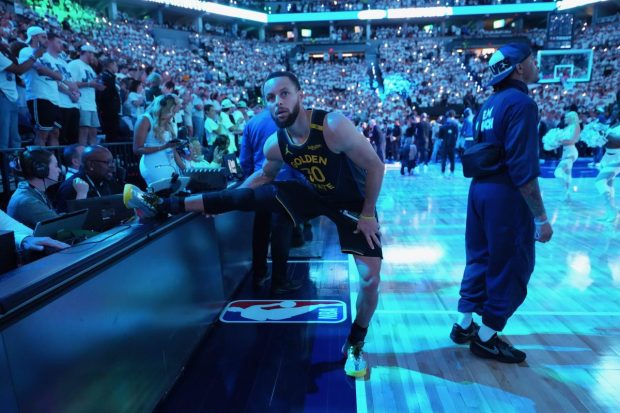
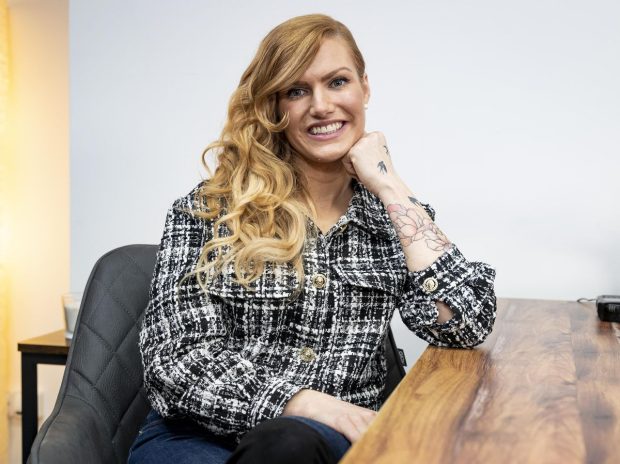
Be the first to leave a comment